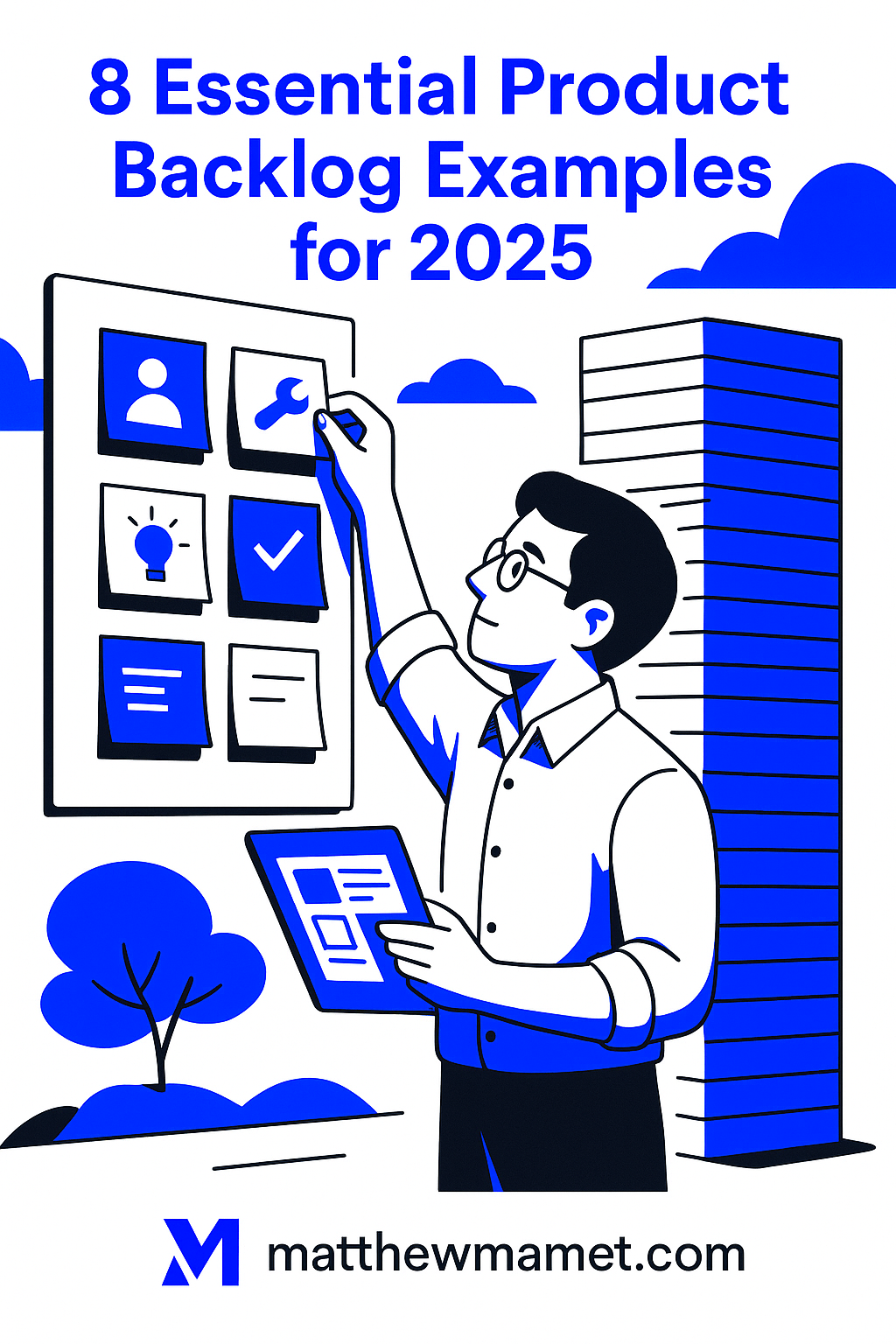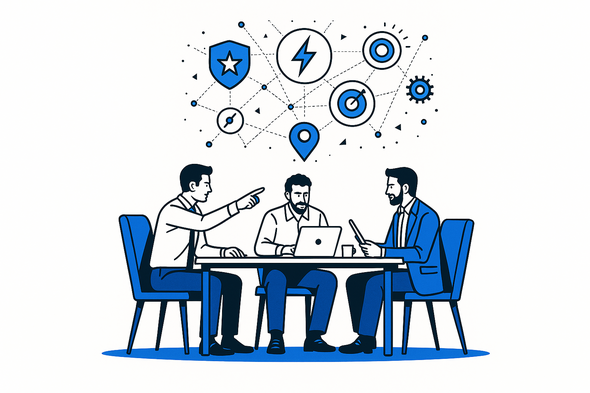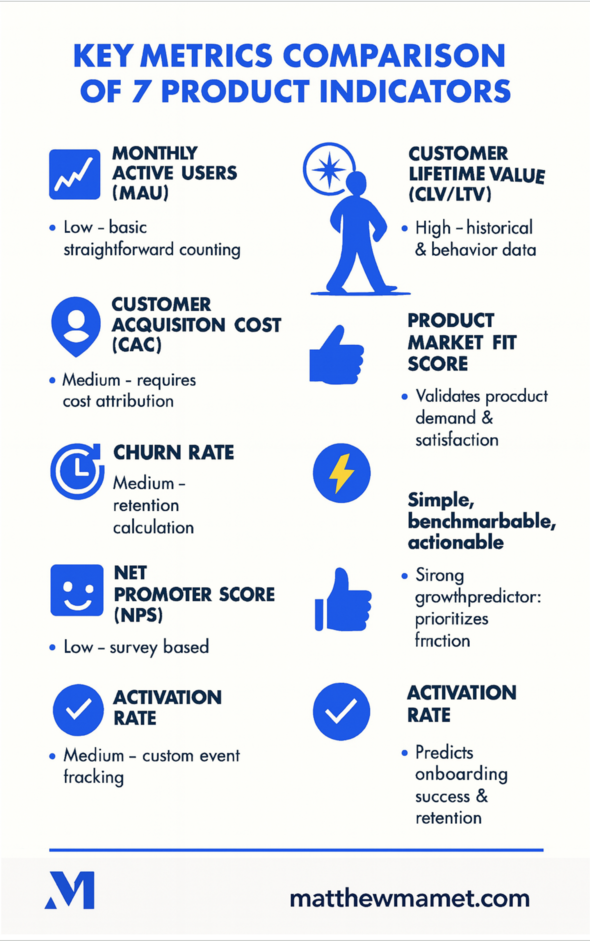Table of Contents
A well-structured product backlog is the heartbeat of any successful agile team, transforming a simple to-do list into a strategic roadmap. Yet, many teams struggle to move beyond basic user stories, leading to misaligned priorities and unclear value propositions. The key isn't just what you put in the backlog, but how you frame and structure each item to reflect strategic intent. This detailed guide moves past theory to provide concrete product backlog examples that you can adapt and use.
This article dissects 8 crucial backlog item types, moving from common entries like user stories and bug fixes to strategic drivers like technical debt and research spikes. For each example, we will break down its strategic purpose, offer tactical insights for implementation, and provide actionable takeaways you can apply immediately. This deep dive will equip you, whether a product manager or a C-suite executive, to build a backlog that truly drives business value and aligns your team for maximum impact.
To effectively guide your product's evolution, understanding how a robust digital transformation roadmap template informs your backlog items can be invaluable, ensuring each task connects to larger business objectives. Our analysis will help you forge that critical link.
1. User Story
A User Story is a fundamental unit of work in Agile frameworks, representing a small, self-contained piece of functionality that delivers value to an end-user. Rather than focusing on technical specifications, it frames a requirement from the user's perspective. This approach ensures that development efforts remain tethered to user needs and business objectives, making it one of the most effective product backlog examples for customer-centric teams.
The standard format, "As a [user type], I want [some goal] so that [some reason]," forces teams to articulate the who, what, and why behind every feature. This structure fosters empathy and a shared understanding across the team, from developers to stakeholders.
Strategic Breakdown
The power of the User Story lies in its simplicity and focus on value. By defining the "so that" clause, teams must justify the development effort in terms of user benefit, preventing the creation of features that don't solve a real problem. For instance, a story like, "As an online shopper, I want to save items to a wishlist so that I can purchase them later," clearly connects a feature (wishlist) to a user goal (deferred purchase).
This format breaks down large, complex initiatives into manageable, deliverable chunks. Each story can be prioritized, estimated, and completed within a single sprint, creating a steady stream of value and enabling rapid feedback loops. The clear structure of a User Story is crucial for effective agile software development. You can explore this topic in more depth to see how it fits into the broader framework by reading more about agile software development best practices.
Actionable Takeaways
- Define Clear Acceptance Criteria: Every User Story should be accompanied by specific, testable conditions that must be met for the story to be considered complete. This eliminates ambiguity and ensures the final output matches expectations.
- Embrace the INVEST Criteria: Aim for stories that are Independent, Negotiable, Valuable, Estimable, Small, and Testable. This framework helps ensure each backlog item is well-formed and ready for development.
- Collaborate on Creation: The best stories are written collaboratively with input from product managers, developers, designers, and even end-users. This collective ownership improves quality and alignment.
The following diagram illustrates the core components that form a complete User Story, showing the hierarchical relationship between the user, their goal, and their motivation.
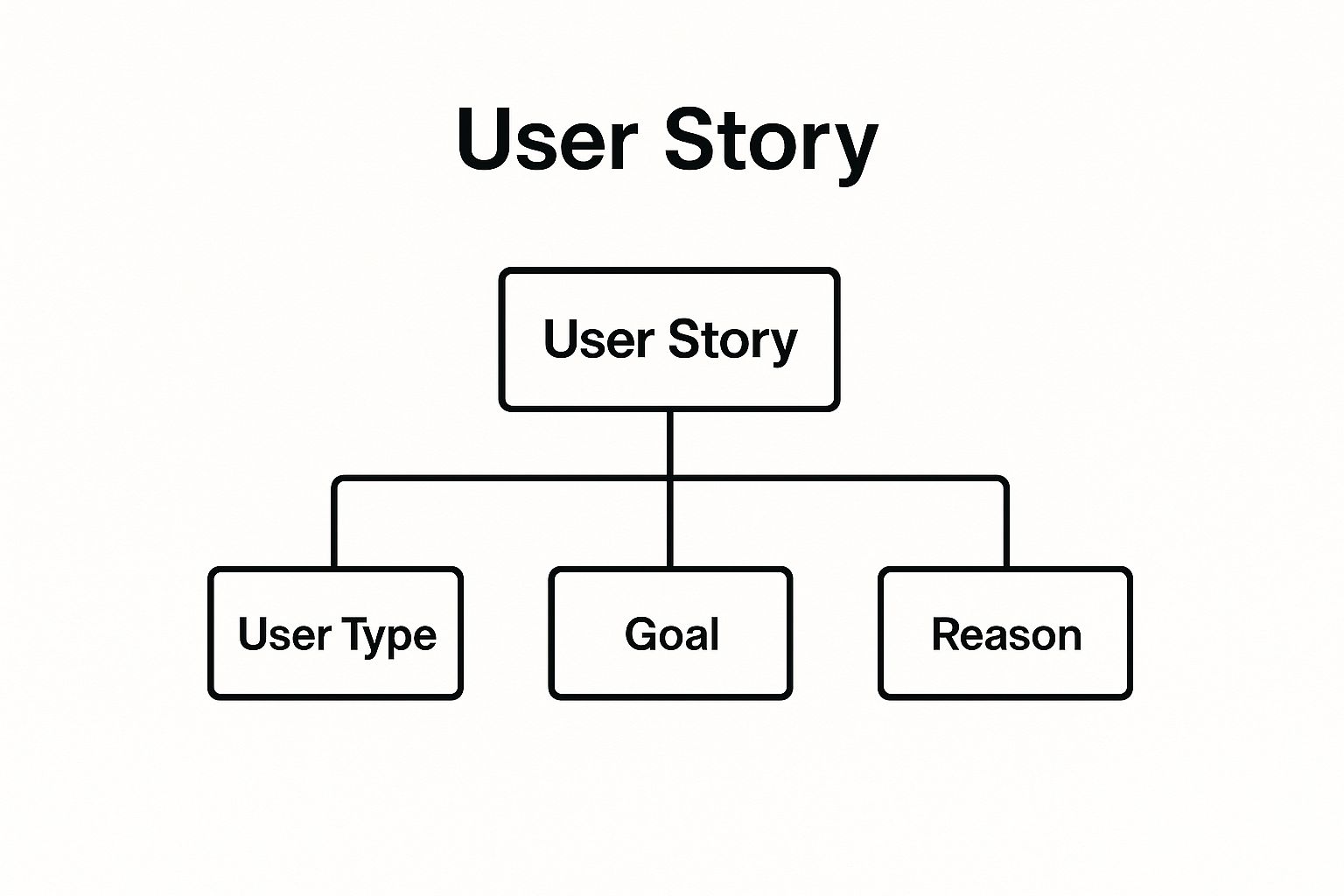
This visualization highlights how the "User Story" is built upon understanding the specific user persona, their immediate goal, and the underlying reason, ensuring every development task is tied directly to user value.
For a deeper dive into crafting effective user stories, the following video provides practical guidance:
2. Epic
An Epic serves as a high-level container for a large body of work that is too complex to be completed in a single sprint. It represents a significant feature or strategic initiative, such as "Implement mobile payment system," which can be broken down into smaller, manageable User Stories. Using Epics is a powerful way to organize the product backlog, providing crucial context for related tasks and ensuring development efforts align with broader business objectives.
Pioneered by thought leaders like Mike Cohn and widely adopted through tools like Atlassian's Jira, the Epic is one of the most essential product backlog examples for managing large-scale projects. It groups related stories under a single, strategic theme, giving stakeholders a clear view of progress on major initiatives without getting lost in the details of individual tasks.
Strategic Breakdown
The true value of an Epic lies in its ability to structure long-term goals and communicate strategic intent. It acts as a placeholder for a major new feature or initiative, allowing teams to sketch out a high-level plan and secure stakeholder buy-in before committing to detailed requirements. For example, an Epic titled "Build comprehensive user analytics dashboard" provides a clear, high-level objective that frames the purpose of dozens of smaller user stories.
This hierarchical approach helps teams maintain focus on the big picture while executing on smaller, incremental pieces of value. Epics enable product leaders to track progress against strategic goals, manage dependencies between related workstreams, and make informed decisions about scope and priority. This ensures that even large, multi-sprint projects remain aligned with the overarching product vision and deliver cohesive value upon completion.
Actionable Takeaways
- Decompose Before Committing: Break Epics down into smaller, well-defined user stories before sprint planning begins. This ensures the team has a clear understanding of the work involved and can estimate effort accurately.
- Establish Clear Success Metrics: Define what success looks like for each Epic from the outset. Attach specific, measurable outcomes (e.g., increase user engagement by 15%) to guide development and validate the final result.
- Use Epics for Stakeholder Communication: Leverage Epics as a primary tool for reporting progress to senior leadership. Their high-level nature makes them perfect for communicating how development work maps to strategic business goals.
3. Feature Request
A Feature Request is a formal suggestion from a user, customer, or internal stakeholder for a new capability or an enhancement to an existing product. Unlike a User Story, which is often crafted internally, a Feature Request is a direct pipeline from the end-user, capturing their wants in their own words. This makes it one of the most direct and valuable product backlog examples for gathering raw, unfiltered user needs and market demands.
These requests are the lifeblood of product evolution, representing opportunities to improve user satisfaction, stay competitive, and drive growth. They serve as crucial inputs that, once refined, can be translated into User Stories, Epics, or other backlog items. Platforms like UserVoice and Atlassian’s JIRA Service Management have popularized systematic collection, turning customer feedback into a structured source of innovation.
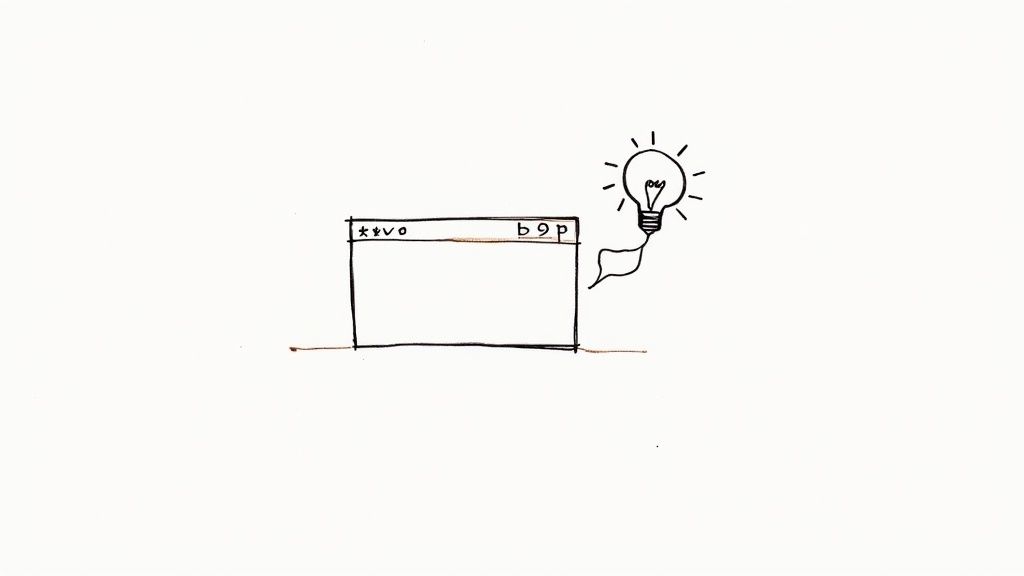
Strategic Breakdown
The strategic power of a Feature Request lies in its origin: it comes directly from the market. Effectively managing these requests prevents the product roadmap from becoming an internal echo chamber. For example, a flood of requests for a "dark mode option" or "integration with a popular calendar app" provides a clear, data-backed signal of high-value user needs that should be prioritized.
A structured process for handling requests is essential. This involves initial screening by product managers, evaluation against strategic goals, and transparent communication with the requester. By systematically collecting and analyzing this feedback, teams can identify trends, validate assumptions, and make data-driven decisions about where to invest development resources, ensuring the product evolves in line with user expectations. This direct feedback mechanism is explored further in resources detailing how to manage feature requests effectively. You can learn more by reading about best practices for managing feature requests.
Actionable Takeaways
- Establish Clear Evaluation Criteria: Define and share the criteria used to assess requests, such as strategic alignment, market reach, and technical feasibility. This ensures a consistent and fair prioritization process.
- Maintain Transparent Communication: Acknowledge every request and keep users informed about its status (e.g., Under Review, Planned, Shipped). Transparency builds customer trust and loyalty.
- Use Feedback Tools: Implement customer feedback platforms or dedicated service desks to systematically collect, track, and analyze feature requests. This centralizes feedback and prevents valuable insights from being lost.
4. Bug Fix
A Bug Fix is a product backlog item dedicated to resolving a defect, error, or other unintended behavior in the software. Unlike feature development, its primary purpose is to restore existing functionality to its expected state, ensuring product stability and user trust. Prioritizing these items is a critical balancing act, making them essential product backlog examples for any mature development process.
These items are typically documented with specific details about the issue, including steps to reproduce it, its severity, and its impact on users. This ensures that the development team can efficiently diagnose and correct the problem without ambiguity.
Strategic Breakdown
The strategic value of a Bug Fix lies in its direct impact on customer retention and product quality. A backlog filled with unresolved bugs erodes user confidence and can lead to churn. For example, a bug causing a login timeout to prematurely end user sessions directly harms the user experience and can prevent critical actions, like completing a purchase.
Effectively managing bugs requires a clear system for classification and prioritization. By categorizing bugs based on severity (e.g., critical, major, minor) and user impact, teams can make informed decisions about what to fix immediately versus what can be addressed in a later cycle. This prevents the team from being overwhelmed by low-impact issues while ensuring critical problems are resolved swiftly. You can learn more about how to systematically manage these issues by exploring best practices in bug tracking and management.
Actionable Takeaways
- Establish Clear Severity Levels: Define and communicate a bug triage system with clear severity and priority levels (e.g., Blocker, Critical, Major, Minor). This ensures that the most impactful bugs are addressed first.
- Include Comprehensive Reproduction Steps: A bug report is only useful if the issue can be reproduced. Insist on clear, step-by-step instructions, environment details (browser, OS), and expected versus actual results.
- Balance Bugs with Feature Work: Dedicate a specific percentage of each sprint's capacity to fixing bugs. This proactive approach, often called a "bug budget," prevents technical debt from accumulating and derailing future development.
5. Technical Debt Item
A Technical Debt Item is a backlog entry dedicated to resolving underlying issues in the codebase or system architecture. While it doesn't deliver new, user-facing functionality, it addresses the "debt" incurred from taking shortcuts or making suboptimal technical decisions in the past. Prioritizing these items is essential for maintaining the product's long-term health, performance, and scalability, making it one of the most critical product backlog examples for sustainable growth.
These items represent an investment in future development velocity. Just as financial debt accrues interest, technical debt makes future changes more difficult, costly, and time-consuming if left unaddressed.

Strategic Breakdown
The core strategy behind managing technical debt is to balance short-term feature delivery with long-term system integrity. Ignoring it can lead to a brittle, unmaintainable product, while addressing it proactively ensures the development team can continue to innovate efficiently. For instance, a backlog item like, "Refactor legacy authentication module," directly improves security and reduces the risk of future data breaches.
These items are crucial for mitigating risks that could otherwise derail product roadmaps. A slow, buggy application creates a poor user experience and can increase customer churn. By allocating a portion of sprint capacity to technical debt, teams can systematically improve the codebase. You can learn more about how this proactive approach fits into a larger strategy by reading about effective product risk management. Understanding different strategies for reducing technical debt is key to managing this type of backlog item effectively.
Actionable Takeaways
- Quantify the Impact: Whenever possible, tie technical debt to business metrics. For example, "Optimize database queries to reduce average page load time by 30%" clearly communicates the value to stakeholders.
- Allocate Dedicated Capacity: Reserve a fixed percentage of each sprint's capacity (e.g., 10-20%) specifically for addressing technical debt. This ensures consistent progress and prevents it from accumulating.
- Document and Prioritize: Clearly document the "why" behind each technical debt item, including the risks of not addressing it and the benefits of resolving it. Use this information to prioritize items based on their urgency and impact.
6. Spike
A Spike is a specific type of backlog item that involves time-boxed research and investigation rather than delivering shippable functionality. Its purpose is to reduce risk, answer critical questions, or understand the effort required for a future user story. Spikes are essential when a team faces significant technical uncertainty or lacks the knowledge to provide a reliable estimate for a complex task, making them one of the most strategic product backlog examples for mitigating project risks.
Originating from the Extreme Programming (XP) methodology, a spike is designed to produce knowledge, not code. The outcome is typically a decision, a proof-of-concept, or a recommendation that enables the team to move forward with confidence. By isolating research into a distinct, time-limited task, teams can prevent "analysis paralysis" and keep development sprints focused on delivering value.
Strategic Breakdown
The strategic value of a Spike is its role as a risk management tool. By dedicating a small, controlled amount of time to investigation, teams can de-risk much larger development efforts. For instance, a Spike to "Investigate performance impact of proposed architecture changes" can prevent a catastrophic slowdown in the live product, saving countless hours of rework. This proactive approach ensures that implementation is built on a solid foundation of evidence rather than assumptions.
Spikes are used to tackle unknowns head-on. Whether it's exploring integration options for a new payment gateway or evaluating machine learning libraries, the Spike provides a formal mechanism for exploration. This process ensures that research is a planned, visible, and accountable part of the development cycle, rather than an ad-hoc activity that disrupts sprint goals.
Actionable Takeaways
- Set Clear Time-Box Limits: A Spike must have a strict time limit to prevent it from turning into an endless research project. The team should agree on the duration before starting and stick to it.
- Define Specific Questions to Answer: To ensure the research is focused, clearly articulate the questions the Spike needs to answer. The goal is to gain specific knowledge, not to explore a topic broadly.
- Document and Share Findings: The deliverable for a Spike is knowledge. Document the findings, conclusions, and recommendations thoroughly and share them with the entire team to ensure the insights are widely understood and applied.
7. Research and Discovery Item
A Research and Discovery Item, often called a "Spike" in some Agile circles, is a product backlog item dedicated to investigation and learning. Instead of delivering direct user functionality, its purpose is to reduce uncertainty, validate assumptions, or explore technical solutions before committing to development. This makes it one of the most strategic product backlog examples for mitigating risk and ensuring the team builds the right thing.
Popularized by methodologies like Lean Startup and design thinking, these items formalize the process of gathering knowledge. They allow teams to time-box exploration, ensuring that research efforts are focused and have clear, actionable goals. This approach prevents teams from diving into complex development work with critical knowledge gaps.
Strategic Breakdown
The core value of a Research and Discovery Item is its ability to de-risk future development. By front-loading learning, teams can make more informed decisions about architecture, user experience, and feature feasibility. For instance, a research item might focus on exploring new technologies or evaluating the best options for mobile app development, such as investigating the leading cross-platform app development tools to determine the most viable path forward.
This type of backlog item transforms ambiguity into concrete knowledge. An item like, "Analyze competitor checkout flows to identify best practices," provides the data needed to design a superior user experience. This foundational work is essential for innovation and is a key principle of building successful products. You can learn more about how this iterative, knowledge-first approach works by exploring the concepts behind the Lean Startup methodology.
Actionable Takeaways
- Define Clear Research Questions: Start with a specific question you need to answer. Vague goals like "research payments" are ineffective. A better goal is "Determine the technical requirements for integrating with Stripe vs. PayPal."
- Time-Box the Effort: Assign a fixed amount of time (e.g., one or two days) to the research. This prevents endless investigation and forces the team to focus on producing a tangible outcome within the given timeframe.
- Produce an Actionable Artifact: The output should not be just a mental understanding. It should be a document, a prototype, a decision matrix, or a presentation that the rest of the team can use to make decisions.
8. Improvement Initiative
An Improvement Initiative is a product backlog item dedicated to enhancing an existing feature, process, or system component. Unlike new features that add functionality, these items focus on optimization, driven by user feedback, performance data, or insights from Agile retrospectives. They are crucial for addressing technical debt, refining user experience, and ensuring the product evolves to meet changing user expectations, making them vital product backlog examples for mature products.
These initiatives are born from a commitment to continuous improvement, a core tenet of Lean and Agile methodologies. By systematically refining what already exists, teams can increase user satisfaction, improve efficiency, and extend the product's lifecycle without the overhead of building entirely new features.
Strategic Breakdown
The strategic value of an Improvement Initiative lies in its ability to generate significant returns on a relatively small investment. Polishing a core workflow, such as streamlining a checkout process to reduce cart abandonment, can have a more substantial impact on revenue than launching a minor new feature. These items are data-driven, often originating from analytics, user session recordings, or direct feedback.
For example, an initiative to "Enhance dashboard loading speed" directly addresses a user pain point and improves usability. Prioritizing this over a less critical new feature demonstrates a commitment to quality and user-centricity. These initiatives keep the product healthy and prevent the slow degradation of performance and user experience over time.
Actionable Takeaways
- Tie to Measurable Goals: Frame every improvement with a clear, measurable outcome. For instance, "Reduce checkout steps from five to three to decrease abandonment rate by 15%." This links the work directly to a business KPI.
- Base on Evidence: Ground all improvement proposals in quantitative data (e.g., analytics, performance metrics) or qualitative feedback (e.g., support tickets, user interviews). This ensures efforts are directed at real, validated problems.
- Use A/B Testing: For significant user-facing changes, implement them as A/B tests. This allows you to validate that the "improvement" genuinely performs better before rolling it out to your entire user base, mitigating risk.
Product Backlog Item Comparison Overview
| Item | Implementation Complexity 🔄 | Resource Requirements ⚡ | Expected Outcomes 📊 | Ideal Use Cases 💡 | Key Advantages ⭐ |
|---|---|---|---|---|---|
| User Story | Low - simple format, focused on user value | Low - minimal technical detail | Clear understanding of user needs and priorities | Capturing user requirements, sprint planning | Easy to understand; promotes user-centric thinking |
| Epic | High - large, multi-sprint scope | High - involves multiple teams/stories | Strategic alignment, big-picture feature planning | Organizing major features or initiatives | Facilitates long-term planning and stakeholder communication |
| Feature Request | Medium - varies depending on detail | Medium - includes evaluation and prioritization | Product improvements and enhanced functionality | Collecting new functionality suggestions | Captures market/user feedback; data-driven prioritization |
| Bug Fix | Medium - requires root cause analysis | Variable - depends on defect complexity | Improved product quality and reliability | Correcting defects and errors | Enhances user satisfaction; reduces support costs |
| Technical Debt Item | Medium to High - technical expertise needed | Medium to High - skilled resources required | Better maintainability, performance, and scalability | Refactoring, performance, and architectural improvements | Improves long-term velocity; reduces future costs |
| Spike | Low to Medium - time-boxed research activity | Low - time boxed, focused resource use | Knowledge acquisition; reduced project risk | Exploring unknowns, technical feasibility studies | Reduces uncertainty; informs decisions early |
| Research and Discovery Item | Medium - involves qualitative/quantitative methods | Medium to High - specialized skills/resources | Informed product strategy and validated assumptions | User research, market analysis, competitive research | Reduces risk of unwanted features; data-driven insights |
| Improvement Initiative | Medium - focused on enhancements | Medium - resources for analysis and testing | Optimized existing features and processes | Enhancing UX, process improvements based on feedback | Improves satisfaction and ROI; responsive to user needs |
From Backlog to Breakthrough: Your Path Forward
Throughout this comprehensive guide, we've dissected a diverse range of product backlog examples, moving far beyond generic templates to reveal the strategic underpinnings that drive real-world success. We've seen how a backlog is not merely a to-do list but a dynamic, strategic artifact that communicates vision, manages risk, and aligns an entire organization toward a common goal. The journey from a basic list of features to a sophisticated strategic tool is a critical one for any modern software company.
The most crucial takeaway is that a high-performing backlog is a balanced ecosystem. It skillfully integrates different item types, each serving a distinct but vital purpose. A backlog that only contains new features is a backlog that is accumulating hidden costs in technical debt and missed discovery opportunities.
Synthesizing Your Strategic Toolkit
Let's distill the core principles from the examples we've explored:
- User-Centricity is Non-Negotiable: User Stories and Feature Requests keep the customer at the heart of every development cycle, ensuring you're building what matters.
- Strategic Vision Needs Structure: Epics provide the high-level roadmap, grouping tactical items into cohesive, impactful initiatives that align with broader business objectives.
- Proactive Health is Essential: Bug Fixes, Technical Debt items, and Improvement Initiatives are not chores; they are strategic investments in your product's long-term viability, performance, and scalability.
- De-risking the Future: Spikes and Research items are your tools for navigating uncertainty. They enable you to make informed decisions, innovate confidently, and avoid costly missteps by investing in knowledge before investing in code.
Your Actionable Next Steps
Mastering the art of the product backlog is an iterative process, much like product development itself. You don't need to overhaul your entire system overnight. Instead, focus on incremental, high-impact changes.
- Conduct a Backlog Audit: Review your current backlog. What item types are dominant? What's missing? Are you actively managing technical debt, or just reacting to it? This audit provides your baseline.
- Introduce One New Item Type: Choose one new item type from our list that addresses a clear gap. If your team struggles with ambiguity, introduce a formal Spike. If you're reactive on quality, schedule a recurring Improvement Initiative.
- Measure and Communicate: Track the impact. Did the Spike reduce estimation errors in the subsequent sprint? Did the technical debt item improve a key performance metric? Share these wins to build momentum and reinforce the value of a balanced backlog.
By embracing this holistic approach, you transform your product backlog from a simple queue of tasks into a powerful engine for innovation, sustainable growth, and market leadership. It becomes the central nervous system of your product strategy, enabling you to build not just a good product, but the right product, durably and at scale. This mastery is what separates proficient teams from industry-defining ones.
For product leaders and executives dedicated to building high-performance teams and scalable systems, mastering these frameworks is just the beginning. Matthew Mamet provides executive coaching and strategic advisory services that turn these concepts into embedded organizational capabilities. If you're ready to transform your product leadership and drive breakthrough results, explore the tailored programs at Matthew Mamet.
Ready to drive more growth & achieve bigger impact?
Leverage my 25+ years of successes and failures to unlock your growth and achieve results you never thought possible.
Get Started

